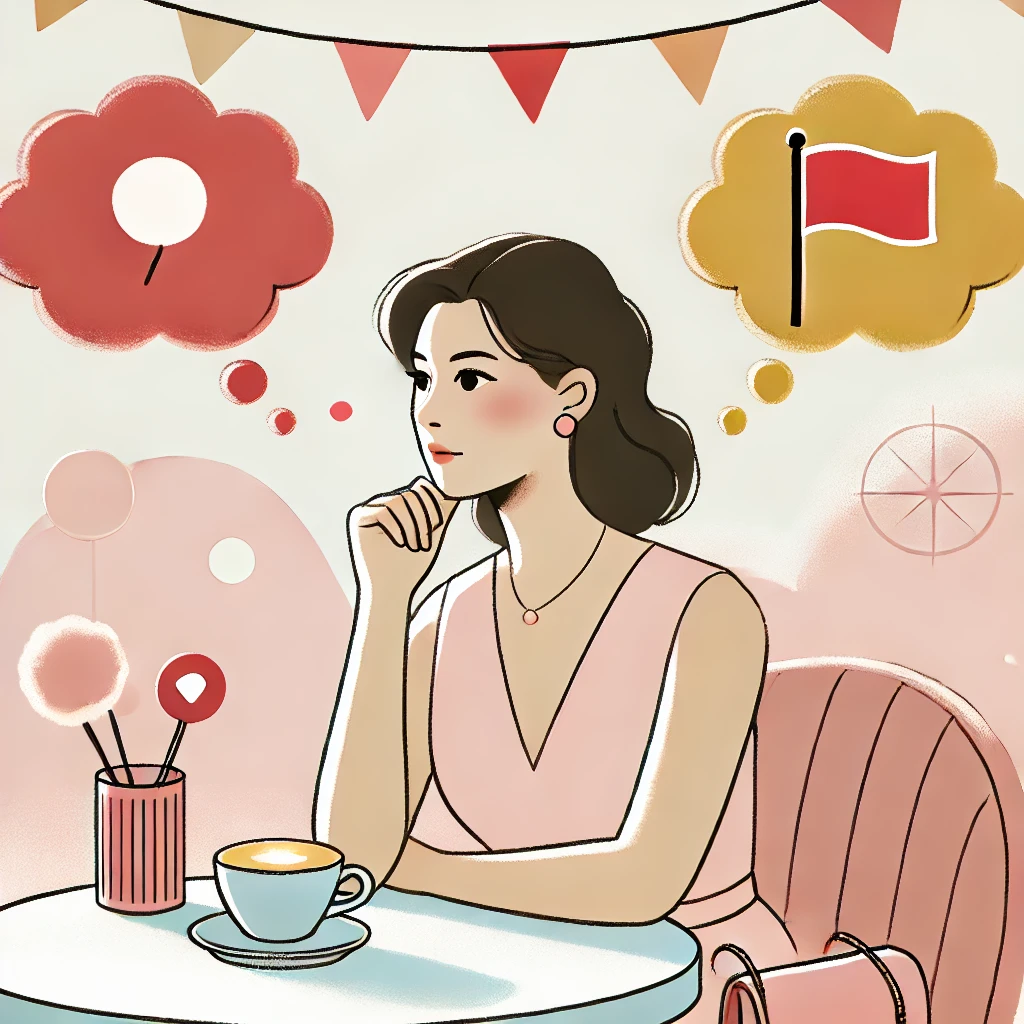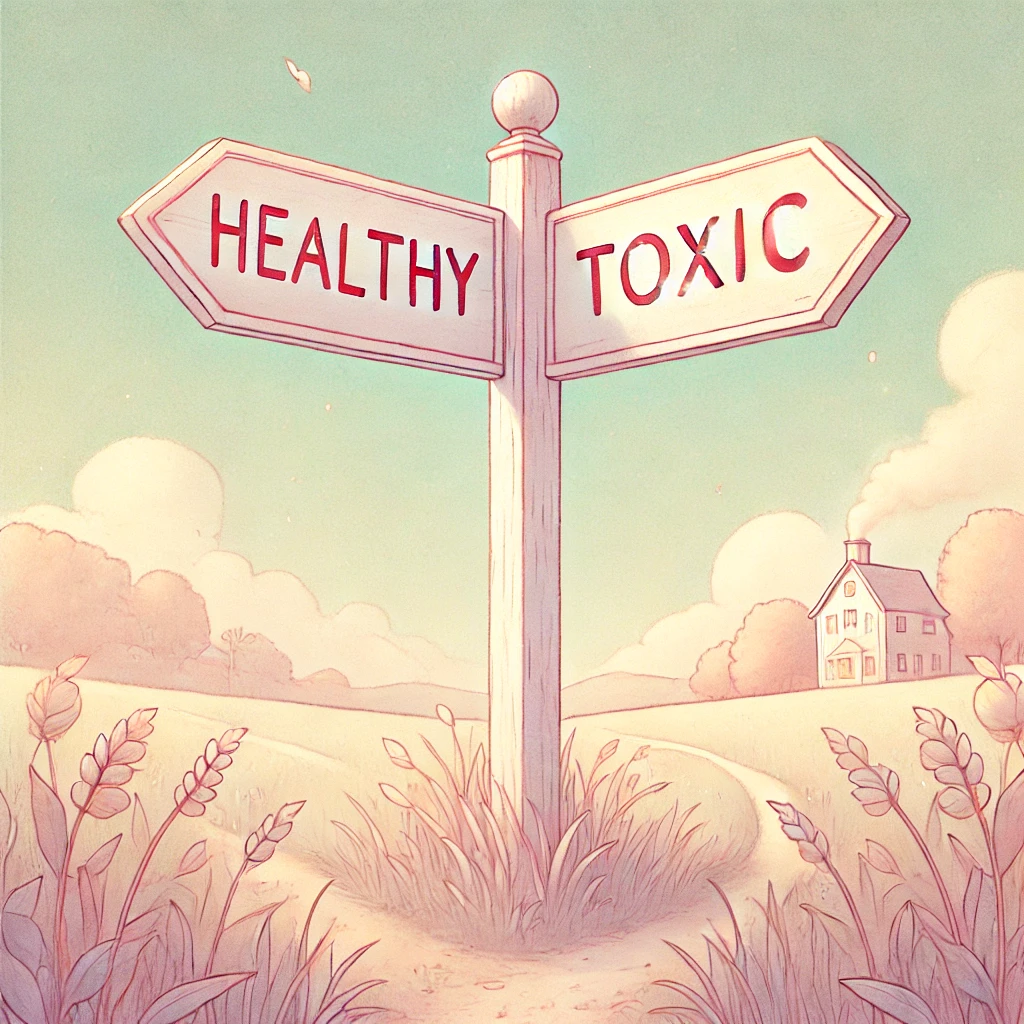When you’re in a relationship, it can be hard to spot the signs that something is wrong. Love can sometimes blind us to the warning signs, or “red flags,” that suggest our relationship may not be as healthy as it should be. But don’t worry—you’re not alone. Let’s talk about how to recognize these red flags and create stronger, healthier connections.
What Are Red and Yellow Flags in Relationships?

We often hear about red flags, but what about yellow flags? Red flags are major signs of trouble, like emotional abuse or a complete lack of respect. Yellow flags, on the other hand, are subtle warning signs that something might be off, like minor communication issues or a partner being overly critical. These shouldn’t be ignored because they can grow into bigger problems over time.
Example: If your partner always dismisses your feelings, that’s a red flag. If they sometimes forget to listen because they’re stressed, that’s a yellow flag worth addressing.
Major Signs to Watch Out For in a New Relationship

Here are some common red flags to be aware of:
- Control Issues: Does your partner make decisions for you or try to control your time? This behavior can limit your freedom and autonomy.
- Emotional Abuse: Resentment, anger, and name-calling can erode your confidence and self-esteem.
- Inability to Communicate: Healthy relationships thrive on open, honest conversations. A partner who avoids or shuts down communication can create long-term misunderstandings.
- Lack of Boundaries: A partner who doesn’t respect your personal space, opinions, or needs can leave you emotionally exhausted.
Pro Tip: If you notice these signs early on, don’t brush them off. They’re indicators of deeper compatibility issues.
How Past Relationships Influence Present Behavior

We all carry lessons (and sometimes scars) from past relationships. These experiences can shape how we act in new ones. If your partner has unresolved anger or resentment from their past, it might spill over into your relationship.
Tip: Be honest about your own past too. Sharing your experiences can build trust and understanding, creating a solid foundation for growth together.
Recognizing and Acknowledging Problematic Behavior
Sometimes, red flags can be easy to miss. Love bombing, for instance, might feel like affection at first but can lead to control later. Trust your instincts. If something feels off, it probably is.
Example: A partner who showers you with excessive attention but becomes distant or critical once they feel they’ve secured your trust is displaying love-bombing tendencies.
The Importance of Self-Reflection in Relationships

Healthy relationships require introspection. Ask yourself questions like:
- Am I truly happy and supported in this relationship?
- Do I feel heard and respected?
- Are my needs being met?
These reflections can help you identify potential issues before they escalate.
The Role of Communication in Resolving Issues
Open communication can address many problems before they escalate. If you’ve noticed red flags, bring them up in a calm, non-confrontational way. Use “I” statements to express your feelings, like, “I feel unheard when you dismiss my concerns.”
Listening Tip: Actively listen to your partner’s response and consider their perspective. This can foster mutual understanding, even in tense situations.
Your friends and family can also offer valuable perspectives. Sometimes, an outside view helps you see things more clearly, especially when you’re emotionally involved.
Knowing When to Walk Away

If red flags are persistent or the relationship becomes harmful, it might be time to leave. It’s not easy, but your happiness and sanity should come first.
Checklist for Leaving:
- Are you constantly unhappy or anxious in the relationship?
- Have efforts to resolve issues been ignored or dismissed?
- Is your partner unwilling to change harmful behaviors?
If you’ve answered “yes” to these, it may be time to prioritize your well-being.
Reconnecting with Friends and Family

Reconnecting with friends and family can be an essential step in maintaining a healthy relationship. Spending time with others can:
- Provide fresh perspectives on your partner’s behavior.
- Help you recognize patterns that might be unhealthy.
- Offer emotional support and validation.
Maintaining these relationships also helps you preserve your sense of identity and autonomy, which is crucial in any romantic relationship.
Building Healthy Relationships Moving Forward
Every relationship is a learning experience. Focus on respecting yourself and finding a partner who values you for who you are. Make time for personal happiness and set clear boundaries. A healthy relationship should lift you up, not bring you down.
Tips for Building Healthy Relationships:
- Mutual Respect: Ensure both partners value each other’s opinions and feelings.
- Honesty: Share your thoughts openly without fear of judgment.
- Shared Goals: Align your values and long-term aspirations to avoid future conflicts.
Self-Care After Leaving a Toxic Relationship

Leaving a toxic relationship can be emotionally draining, but prioritizing self-care is essential. Here’s how to heal:
- Seek Support: Talk to friends, family, or a support group about your experiences.
- Practice Self-Love: Engage in activities that bring you joy and build confidence.
- Set Personal Goals: Focus on hobbies, career aspirations, or personal growth.
- Recognize Progress: Celebrate small victories as you move forward.
Healing takes time, so be patient and embrace the journey.
How to Help a Friend in a Troubled Relationship
If you suspect a friend is dealing with red flags, here’s how to support them:
- Be a Safe Space: Let them know they can talk to you without judgment or fear.
- Share Resources: Provide them with articles or contacts for professional help.
- Encourage Action: Suggest steps they can take, like seeking therapy or evaluating options, without pressuring them.
- Respect Their Pace: Understand they may not be ready to leave, and that’s okay. Offer consistent support while respecting their decisions.
Frequently Asked Questions
- What’s the difference between red and yellow flags? Red flags are major issues like emotional abuse or controlling behavior. Yellow flags are smaller concerns that might develop into bigger problems if ignored.
- How can I talk to my partner about red flags? Use calm and non-confrontational language. Focus on how their actions make you feel rather than accusing them.
- What if I notice a red flag after several years? It’s never too late to address issues. Have an honest conversation and, if needed, seek guidance to work through challenges.
Additional Resources
- Healthy Relationships Toolkit
- Signs of Emotional Abuse
- How to Set Boundaries
- Recognizing Love Bombing
- Self-Care After Breakups
- Helping a Friend in Need
For more tips and guidance, explore resources that can help you gain a deeper understanding of relationship dynamics and self-care.
Conclusion
Red flags can be tricky to spot, especially when emotions are involved. But by staying aware, communicating openly, and prioritizing your happiness, you can create a relationship that’s built on trust and mutual respect. Remember, you deserve love that makes you feel safe and valued.





